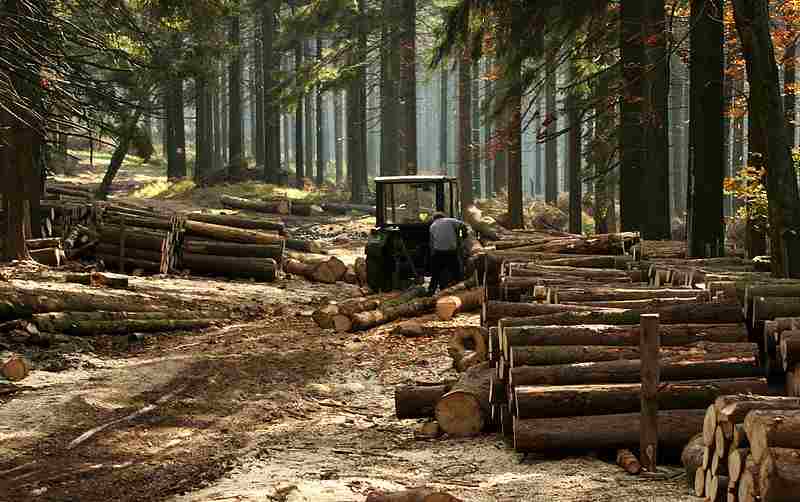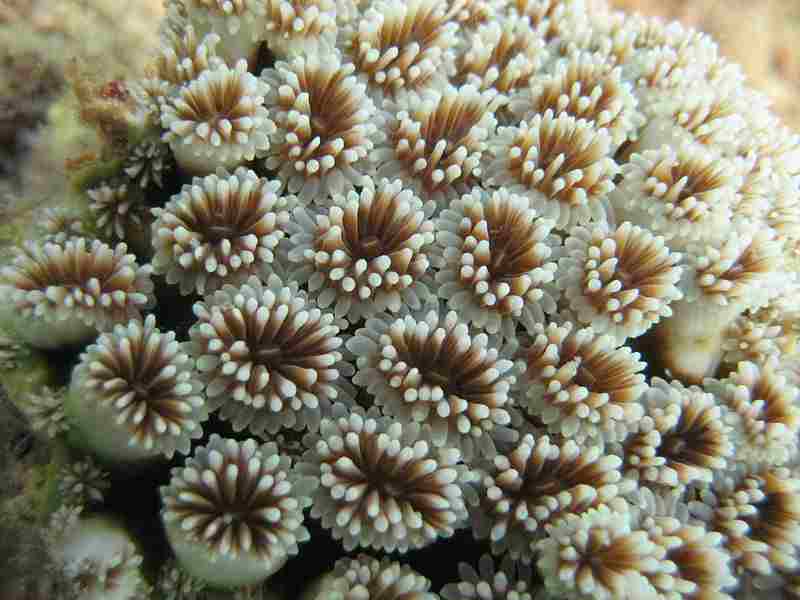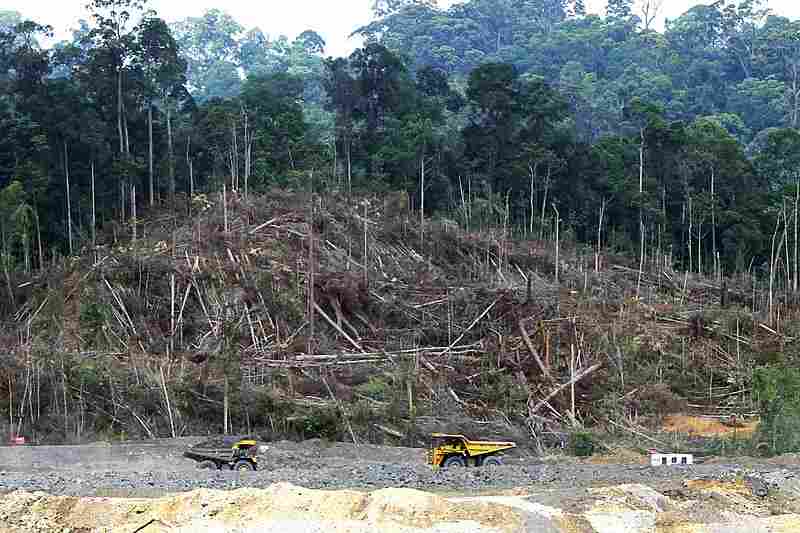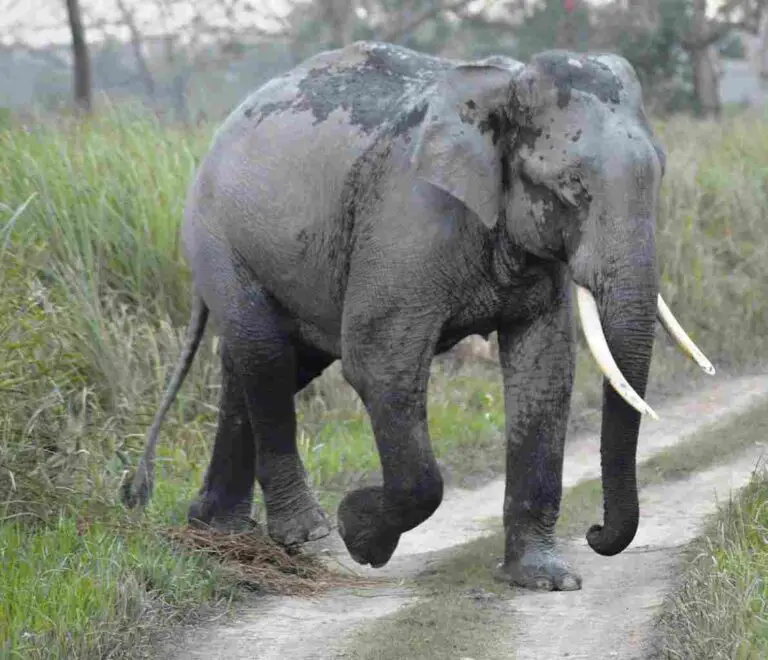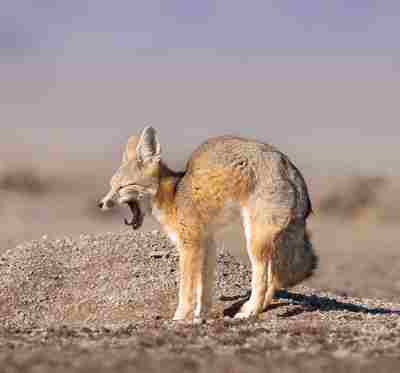7 Human Impacts on Temperate Deciduous Forest Ecosystems
Human impacts of temperate deciduous forest ecosystems are; biodiversity decline, habitat fragmentation, pollution, deforestation, changes in demographic composition, hybridization of native flora and fauna, and climatic changes.
This article discusses some human impacts on temperate deciduous forest ecosystems; their severity and implications, as follows;
1). Biodiversity Decline: One of the Human Impacts on Temperate Deciduous Forest Ecosystems
Biodiversity decline is a major human impact on temperate deciduous forest ecosystems. These ecosystems, which are characterized by their diverse plant and animal species, are under increasing threat of deterioration due to human activities. The severity of this factor and its implications for temperate deciduous forests are a cause for concern.
Severity of Biodiversity Decline in Temperate Deciduous Forests
The severity of biodiversity decline in temperate deciduous forests can be assessed based on phenomena like habitat loss, invasive species, pollution, overharvesting, and climate change.
One of the most severe factors contributing to biodiversity decline is habitat loss. Urbanization, agriculture, and industrial deforestation have all led to the destruction of vast areas of temperate deciduous forests. The conversion of forests into residential, industrial, and agricultural zones has fragmented and reduced the available habitat for many native species.
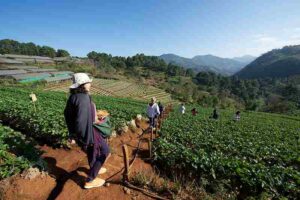
The introduction of non-native, invasive species is another factor that contributes to biodiversity/species richness decline. Invasive species can compete intensely with native flora and fauna, disrupt ecological balances, and reduce the diversity of native species.
Pollution from various sources, such as industrial emissions and agricultural runoff, has contaminated air, soil, and water in many temperate deciduous forests. This pollution can be harmful to both plant and animal species, causing declines in population sizes and species richness.
Climate change is altering temperature and precipitation patterns in temperate deciduous forests, thereby affecting the timing of seasonal events like flowering and migration. These changes can disrupt ecological interactions on various levels, and lead to shifts in the biotic composition of forest communities.
Overharvesting of forest resources, including timber and certain plant and animal resources, has put additional pressure on temperate deciduous forest ecosystems. Unsustainable logging and hunting activities can lead to population declines and, in the most extreme cases, extinction of species.
Implications of Biodiversity Decline for Temperate Deciduous Forests
The implications of biodiversity decline for temperate deciduous forest include; species loss, ecosystem disruption, reduced resilience, impacts on human well-being, aesthetic and cultural changes, and loss of scientific data sources.
As the diversity of plant and animal species declines, the risk of local extinctions and, in some cases, global extinctions increases. This can result in the loss of unique genetic diversity as well as various ecological functions.
Biodiversity decline disrupts the trophic food web of interactions that occurs within temperate deciduous forests. It can alter nutrient cycling, predation, and pollination dynamics, which, in turn, affects the overall vitality and long-term sustainability of the ecosystem.
A diverse ecosystem is generally more resilient in the face of environmental changes. Biodiversity decline reduces the ability of temperate deciduous forests to adapt to disturbances like disease outbreaks, extreme weather events, and largescale environmental degradation.
Human communities that rely on temperate deciduous forests for resources such as food, medicine, and recreational opportunities can also be adversely affected by biodiversity loss. It can reduce the availability of these resources, and inhibit local economies.
Many temperate deciduous forests have intrinsic value for humans due to their beauty and cultural significance. Biodiversity loss can reduce the aesthetic and cultural value of these forests.
Lastly, biodiversity decline also has implications for scientific knowledge. With the extinction of species, we lose potential sources of knowledge about ecosystems, biology, and potential applications in various fields.
Mitigating the Effects and Severity of Biodiversity Decline in Temperate Deciduous Forests
To mitigate the severity of biodiversity decline and its implications for temperate deciduous forests, conservation efforts are very essential.
These efforts may include delineation and protection of sensitive areas, implementation of sustainable land management practices, control of invasive species, reduction of pollutant influx, and addressing the drivers of climate change.
Protecting the rich biodiversity of temperate deciduous forests is not only important for the productivity of these ecosystems, but also for the well-being of human communities within and beyond temperate regions.
2). Habitat Fragmentation
Habitat fragmentation; a direct result of human activities, can be described as a critical and widespread impact on temperate deciduous forest ecosystems.
These ecosystems, typically characterized by their lush canopies and rich biodiversity, are at increasing risk due to the fragmentation of their habitats.
Here, a discussion of the severity of this factor and its implications for temperate deciduous forests is provided.
Severity of Habitat Fragmentation for Temperate Deciduous Forests
Factors that can be used to evaluate the severity of habitat fragmentation for temperate deciduous forests include; urbanization and development, agriculture, infrastructure, logging, and mining rates.
One of the most effective drivers of habitat fragmentation in temperate deciduous forests is combined urbanization and land development. As human populations expand, forests are often cleared for residential and industrial purposes, creating isolated patches of habitat.
Agricultural endeavors have also led to the conversion of large forested areas into farmland. The fragmentation of extensive vegetated areas by agricultural fields and infrastructure such as roads further disrupts the continuity of temperate forested landscapes.
The construction of roads, bridges, power plants, and other infrastructural systems may bisect temperate deciduous forests. This can physically divide the habitat into smaller fragments, making it difficult for species to move between these areas.
Unsustainable logging practices, when not managed properly, can lead to severely fragmented forest landscapes. Clear-cutting and selective harvesting create openings in the forest that can hinder species movement and disrupt fundamental ecological processes like predation and hibernation.
Mining operations can drastically alter the landscape, by fragmenting large tracts of forested areas. These activities create disturbances that are often slow to recover, and the remaining patches of forest may be disconnected.
Implications of Habitat Fragmentation for Temperate Deciduous Forests
Implications of habitat fragmentation for temperate deciduous forests include; isolation of populations, edge effects, reduced biodiversity, altered ecological dynamics, reduced habitat quality, edge-adaptation, increased vulnerability, and limited species navigation.
Habitat fragmentation isolates populations of plants and animals. This can lead to genetic isolation, reducing genetic diversity as well as the ability to adapt to changing environmental system-conditions.
The creation of abrupt forest edges as a result of fragmentation exposes the interior of the forest to altered microclimatic conditions, increased light levels, and higher temperatures. These edge effects can disrupt the natural balance of the entire ecosystem.
As temperate habitats become smaller and more isolated, the number of species that can be supported within each fragment may decrease. Some species may become locally extinct within these smaller patches.
Fragmentation disrupts major ecological processes like pollination, seed dispersal, and predator-prey interactions. These disruptions can all have cascading effects on the productivity and functionality of the ecosystem.
Smaller forest fragments often provide poorer habitat quality, especially for species that require larger territories. This can affect reproductive success and population sizes.
Edge-adapted species that thrive in fragmented areas may compete against or prey on species that require the interior of the forest. This can lead to imbalances of resource availability in the ecosystem.
Fragmented populations are often more vulnerable to environmental stresses, diseases, and invasive species. The ability to withstand such disturbances is reduced in smaller and isolated populations.
Many species within temperate deciduous forests require larger ranges to find mates, resources, or migrate. Fragmentation limits their movement for such purposes, and can lead to population declines.
Mitigation of Habitat Fragmentation Problems in Temperate Deciduous Forests
In order to address the severity of habitat fragmentation and its implications for temperate deciduous forests, conservation efforts are important.
Strategies that can be applied include creating and preserving habitat corridors, establishing extensive wildlife reserves, and implementing sustainable logging practices.
These measures can help to maintain ecological connectivity, mitigate the negative effects of fragmentation, as well as protect the rich biodiversity and ecological integrity of temperate deciduous forests.
3). Pollution: One of the Human Impacts on Temperate Deciduous Forest Ecosystems
Pollution, particularly as a result of human activities, is a significant and pervasive factor that impacts temperate deciduous forest ecosystems.
These ecosystems are increasingly threatened by various forms of anthropogenic pollution. The severity of this factor and its implications for temperate deciduous forests are substantial, as shown in the following discussions.
Severity of Pollution in Temperate Deciduous Forests
Phenomena like air pollution, atmospheric deposition, water pollution, and chemical influx; all point to the severity of pollution in many temperate deciduous forests.
Air pollution, mainly in the form of emissions from industrial facilities, transportation, and agricultural systems, introduces pollutants such as nitrogen oxides, sulfur dioxide, and particulate matter, into the atmosphere. These pollutants can contribute to other hazards like acid rain, smog, and atmospheric deposition.
Pollutants emitted into the air can be transported over long distances and deposited onto the forest ecosystem through precipitation. This often leads to water and soil pollution, and affects both terrestrial and aquatic segments of the ecosystem.
Runoff from urban areas, agricultural fields, and largescale industrial sites, can introduce contaminants into nearby water bodies, affecting both aquatic organisms and the physicochemical conditions of water sources used by terrestrial forest species.
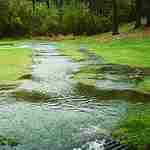
Chemical pollutants, including pesticides, herbicides, and heavy metals, can be directly applied in the forest, such as in agriculture or forestry practices. These chemicals can disrupt the ecological balance within the forest.
Implications of Pollution on Temperate Deciduous Forests
Temperate deciduous forests experience the impacts of pollution in areas such as soil and water quality, impaired reproduction, biodiversity loss, food chain disruption, respiratory issues, eutrophication, genetic and population effects, and overall forest health.
Pollution, especially from atmospheric deposition and runoff, can lead to the acidification of soils and water bodies. This can harm plants, soil-dwelling communities, and aquatic species.
Certain pollutants can disrupt the reproductive success of organisms in temperate deciduous forests. For example, heavy metal intoxication and bioaccumulation can lead to reduced reproductive rates and birth defects in both animal wildlife and temperate flora.
As shown in earlier discussions, pollution can both direct and indirect impacts on biodiversity. Some species may be sensitive to pollutants and experience declines, while others, often pollution-tolerant species, may increase in abundance.
Also, pollution can disrupt temperate forest food chains and trophic interactions. For example, pesticide contamination can lead to declines in pollinators and the species that rely on them.
Air pollution can cause respiratory issues in both plants and animals. This can lead to reduced growth and productivity in forested areas.
Excess nutrients from pollution, especially from agricultural runoff, can lead to eutrophication in temperate water bodies. This can degrade aquatic ecosystems, and affect the quality of water resources available to terrestrial organisms.
Pollutants can induce genetic mutations in forest species. Population sizes may also decrease, particularly in species that are highly sensitive to pollution.
Generally, pollution can weaken the health of temperate deciduous forests, making them more susceptible to disease outbreaks and invasive species, among other ecological stresses.
Steps to Reduce the Severity of Deciduous Forest Pollution
To address the severity of pollution and its implications for temperate deciduous forests, efforts should focus on reducing emissions and adopting sustainable land management practices.
Regulations to limit pollution sources, conservation of forested areas, and environmental remediation measures can help protect the integrity and vitality of these ecosystems and the diverse species that depend on them.
4). Deforestation
Deforestation, driven by anthropogenic activities, is a significant and often severe impacting factor on temperate deciduous forest ecosystems.
Deciduous forest ecosystems, with their distinct vegetative assemblages and seasonal changes, are threatened by the widespread removal of their natural forest cover. Here is an elaborate outline of the severity of this factor and its implications for temperate deciduous forests.
Severity of Deforestation in Temperate Deciduous Forests
The severity of deforestation in temperate deciduous forests can be discussed in terms of; logging, agriculture, urbanization and infrastructure development.
One of the most prominent drivers of deforestation in temperate deciduous forests is urbanization and land conversion. As human populations progressively expand, forests are often cleared for residential, public-infrastructural, and industrial purposes.
Agricultural expansion has led to the conversion of large forested zones into farms in many temperate areas. Forests are often cleared in order to make way for crops, pastures, and other agricultural entities.
As stated earlier, unsustainable and unmanaged/unregulated logging practices, can lead to the deterioration and fragmentation of temperate deciduous forests. Timber harvesting can lead to the loss of large tracts of forested areas.
The construction of infrastructure can cut through temperate deciduous forests, creating disruptive effects that alter the continuity of forested landscapes.
Implications of Deforestation for Temperate Deciduous Forests
In temperate deciduous forests, deforestation can be linked to habitat loss, biodiversity decline, edge effects, reduced carbon sequestration, loss of ecosystem services, soil erosion, and disruption of water flow.
Deforestation results in the direct loss of habitat for many temperate forest plants and animals. Many species, particularly those specialized for forested environments, lose their homes.
As forests are cleared, the diversity of species that inhabit them simultaneously declines. This includes both plant and animal populations, several of which may become locally extinct.
Forest edges created as a result of deforestation, often expose the interior of the temperate deciduous forest to intolerable climatic and physicochemical conditions. These conditions can have disruptive effects on the ecosystem.
Temperate deciduous forests are important carbon sinks, which store significant amounts of carbon dioxide. Deforestation releases the stored carbon, thereby contributing to global climate change.
Without the stabilizing and sheltering influence of trees and other types of vegetation, deforested areas are more susceptible to soil erosion, which can lead to sedimentation of water bodies and degradation of water quality.
Deforestation impacts the ecosystem services provided by temperate deciduous forests, including air and water purification, nutrient cycling, as well as the provision of resources such as timber and non-timber forest products.
Forests are instrumental in regulating water flow, thereby helping to prevent regional flood hazards and droughts. Deforestation can disrupt this regulation, leading to altered water flow trends.
Many indigenous and local communities depend on temperate deciduous forests for various aspects of their livelihoods, including food, medicine, and cultural practices. Deforestation can disrupt these traditional lifestyles.
Mitigation of Deforestation in Temperate Deciduous Forests
To mitigate the severity of deforestation and its implications for temperate deciduous forests, conservation measures are required.
Some of these measures include the delineation of protected areas, enforcement of sustainable logging policies, reforestation and afforestation, and regulations to limit further deforestation.
5). Changes in Demographic Composition: One of the Human Impacts on Temperate Deciduous Forest Ecosystems
Changes in demographic composition, particularly those associated with (and driven by) human population growth and migration, represent a significant and often overlooked impact on temperate deciduous forest ecosystems.
These ecosystems are increasingly affected by shifts in human populations. The severity of effects caused by this factor, and its implications for temperate deciduous forests are noteworthy.
Severity of the Effects, of Changes in Demographic Composition, for Temperate Deciduous Forests
Factors that can be used to measure the severity of demographic effects on temperate deciduous forests, include; population growth, rural to urban migration, and suburban expansion.
As human populations continue to expand, the demand for essential resources and land also increases. This leads to urban sprawl, infrastructure development, and agricultural expansion, which can all result in deforestation and habitat loss within temperate deciduous forests.
Rural-to-urban migration patterns contribute to land-use changes. As people move toward urban areas, abandoned rural lands may be left unused, reclaimed for agriculture, or redeveloped, leading to shifts in land cover characteristics.
Suburban development and the establishment of suburban sprawl often encroach upon nearby forests. This can lead to fragmentation of natural habitats, and an increased risk of disturbances.

Implications of Changes in Demographic Composition
Implications of demographic changes for temperate deciduous forests include; habitat conversion, fragmentation, introduction of invasive species, air and water pollution, altered ecosystem services, biodiversity decline, increased human-wildlife conflict, and climate change.
As people move into formerly rural and forested areas, land is usually converted for residential, commercial, and industrial purposes. This leads to the direct loss of temperate deciduous forest habitat.
Suburban and urban expansion can fragment forested areas, effectively isolating forest patches from one another. This disrupts ecological connectivity/continuity, and leads to edge effects that alter natural forest dynamics.
Human navigation, occupancy and activity can introduce invasive species to temperate deciduous forests. These species may outcompete native flora and fauna, thereby facilitating disruptions in forest ecology.
Urban and suburban areas generally contribute to air and water pollution, which can affect nearby temperate deciduous forests. Pollution can harm terrestrial plant health and aquatic ecosystems, altering the biotic and abiotic dynamics of the forest.
Changes in land use, such as the replacement of forests with urban infrastructure, can lead to altered ecosystem services. These changes can affect temperature regulation, carbon sequestration, and the production of forest resources.
As they are converted into urban or suburban landscapes, the biodiversity of temperate deciduous forests is threatened. Many species, especially those with specialized habitat requirements, may suffer abrupt population declines or local extinctions.
Also, as humans encroach on forested areas, conflicts with wildlife may arise. Animals that have lost habitat may venture into urban areas in search of refuge and food, leading to potential issues.
Changes in demographic composition also impact energy use and transportation patterns, contributing to greenhouse gas emissions and climate change, which can affect forest ecosystems.
Addressing the Severity of Demographic Impacts on Temperate Deciduous Forests
To address the severity of changes in demographic composition and their implications for temperate deciduous forests, conservative measures like sustainable urban planning and responsible land use, are essential.
Strategies should aim to minimize habitat loss, reduce pollution, and also protect the ecological integrity of these ecosystems while accommodating regional human populations. Balancing the needs of both people and nature is a critical step for the long-term health and sustainability of temperate deciduous forests.
6). Hybridization of Native Flora and Fauna
Hybridization of native flora and fauna, a consequence of human-driven changes in the environment, is an often underestimated yet notable impact on temperate deciduous forest ecosystems.
These ecosystems are increasingly facing hybridization challenges that pose a threat to their genealogical integrity and long-term resilience. The severity of this issue and its implications for temperate deciduous forests are significant.
Severity of Hybridization of Native Flora and Fauna in Temperate Deciduous Forests
Factors that provide information on the severity of organic hybridization for temperate deciduous forests include; introduction of non-native species, fragmentation, habitat alteration, and climate change.
Human activities have introduced non-native species to temperate deciduous forests. These non-natives can hybridize with native species, leading to the creation of hybrids that may compete with or outcompete pure native species.
Habitat fragmentation, often resulting from urbanization and land-use changes, can bring native species into closer contact with one another, thereby increasing the likelihood of hybridization.
Changes in climate patterns which are driven by human-induced climate change, can alter the distribution and timing of native species' breeding seasons, increasing the chances of hybridization between species that were previously, reproductively isolated.
Implications of Hybridization of Native Flora and Fauna
Implications of hybridization of native flora and fauna, for temperate deciduous forests include; loss of genetic integrity, competition, genetic swamping, loss of biodiversity, ecologic disruption, loss of adaptations, and invasive hybridization.
Hybridization can lead to the loss of genetic integrity in native temperate species. The resulting hybrids may possess mixed genetic characteristics, making it challenging to distinguish them from pure native species.
Often, hybridization results in individuals with intermediate traits. If hybrids are more resilient and competitive than pure native species, they may outcompete and displace the latter, leading to unfavorable exclusion patterns and declines in native species' populations.
In cases of asymmetric hybridization, where one species contributes more to the hybrid gene pool, the genetic characteristics of the native species may be swamped, potentially leading to the extinction of pure native populations.
As hybrids and non-natives become more common in temperate deciduous forests, there is a high risk of reduced biodiversity. The unique genetic makeup of native species may be lost, along with their evolutionary imprints and the ecological functions which they provide.
Changes in species composition and behavior due to hybridization can disrupt ecological interactions and biotic processes within the forest. This can have measurable cascading effects on other species and ecosystem functions.
Native species in temperate deciduous forests have evolved specific adaptations to thrive in their local environment. Hybridization can dilute or completely erase these adaptations, thereby reducing the resilience of populations to environmental stressors.
Lastly, hybridization can give rise to invasive hybrid species that can rapidly spread, outcompeting both pure native species and their parent species. These invasive hybrids can disrupt the natural trophic dynamics of forest ecosystems.
Measures to Address the Severity of Flora and Fauna Hybridization in Temperate Forests
To address the severity of hybridization of native flora and fauna and its implications for temperate deciduous forests, conservation strategies should focus on maintaining genetic integrity, monitoring hybridization trends, and protecting/reserving the most critical habitats for native species.
Management efforts should aim to reduce the introduction of non-native species, mitigate habitat fragmentation, and address climate change in order to preserve the biodiversity and ecological integrity of this biome.
7). Climatic Changes: One of the Human Impacts on Temperate Deciduous Forest Ecosystems
Climatic changes that are driven by human activities, represent a significant and growing impact on temperate deciduous forest ecosystems.
These ecosystems are increasingly affected by shifts in climate patterns. The severity of climatic changes and its implications for temperate deciduous forests are substantial.
Severity of Climatic Changes for Temperate Deciduous Forests
Factors that can be used to assess the severity, of effects of climatic changes for temperate deciduous forests, include global warming, extreme weather events, altered precipitation patterns, and shifts in species ranges.
Human-induced global warming is causing a general increase in temperatures. This warming can affect the timing of seasonal events in temperate deciduous forests, such as budburst, flowering, and leaf fall/abscission.
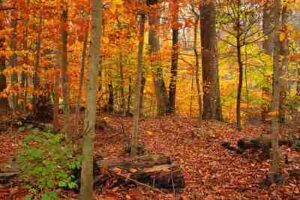
The frequency and intensity of extreme weather events, including droughts, storms, and heatwaves, are generally on the rise. These events can lead to physical damage in forested areas and disrupt trophic processes.
Climate change is directly causing shifts in precipitation patterns, thereby leading to more intense precipitation and increased risk of flooding. On the other hand, prolonged droughts can stress forest ecosystems.
As temperatures rise and precipitation patterns change, some species may shift their ranges. New species may move in, potentially resulting in largescale changes in community composition.
Implications of Climatic Changes for Temperate Deciduous Forests
Some implications of human-induced climatic changes for temperate deciduous forests are; altered phenology, increased stress, range shifts, altered forest structure, invasive species, increased wildfire risk, altered carbon cycles, and changes in ecosystem services.
Climatic changes can lead to drastic shifts in the timing of natural events. For example, warmer temperatures can trigger earlier flowering and budburst, thereby affecting species interactions and availability of resources.
Forest ecosystems can become more stressed due to rising temperatures and drought. This can lead to increased susceptibility to pests and diseases, as well as reduced growth and health in trees.
As species move to track their ideal temperature and precipitation conditions, there can be disruptions in ecological relationships, including predator-prey interactions, pollination, and seed dispersal.
Climate-induced stress may lead to changes in forest structure, including shifts in tree species composition and tree mortality. This can have cascading impacts on forest dynamics.
Changing climatic conditions can create opportunities for invasive species to thrive in temperate deciduous forests. Invasive species can compete intensely against native flora and fauna.
Warmer and drier conditions increase the risk of wildfires in some temperate deciduous forests, which can have devastating effects on forest habitats and their biodiversity.
Changes in climate can also affect the ability of forests to store carbon. Increased temperatures and stress can reduce carbon sequestration capacity, potentially contributing to increased atmospheric carbon dioxide levels.
Climate-induced changes in temperate deciduous forests can impact the ecosystem services which they provide, such as regional temperature regulation, air and water purification, and the provision of essential resources.
Addressing Climatic Change Impacts on Temperate Deciduous Forests
In order to address the severity of climatic changes and their implications for temperate deciduous forests, adaptation and mitigation strategies are needed.
Efforts should concentrate on minimizing greenhouse gas emissions, restoring and conserving forested areas, monitoring climate impacts on forest habitats, and implementing sustainable land management measures. These efforts can help temperate deciduous forests adapt to changing conditions while maintaining their ecological integrity.
Conclusion
Human impacts on temperate deciduous forest ecosystems are;
1. Biodiversity Decline
2. Habitat Fragmentation
3. Pollution
4. Deforestation
5. Changes in Demographic Composition
6. Hybridization of Native Flora and Fauna
7. Climatic Changes


